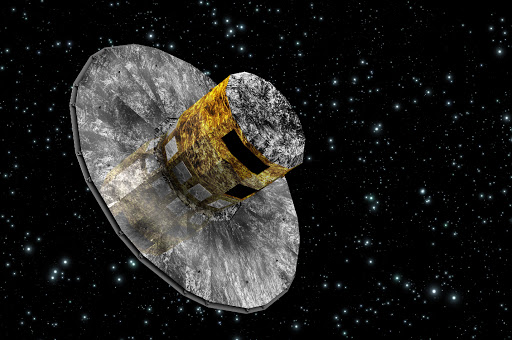The groundbreaking "Gaia" spaceraft was launched this week, in order to photograph and map the exact location of over a billion stars. It has a billion-pixel camera installed, enabling scientists to delve deeper than ever before into the mysteries of the universe.
The spacecraft was launched on Thursday, 18 December 2013 at 9:12 GMT. It was attached to the Soyuz rocket that took off from Sinnamary, France. It is headed for an observing station which rests around 1.5 milllion kilometres from the Earth (nightside) and is expected to arrive in about a month.
The idea of the satellite came about in 1991, but official constructions did not begin until 2006. Seven years later, “one of the most ambitious space missions in history” was launched, reported the BBC.
Astrium satellites in Toulouse, France, led the development of Gaia, along with another 70 participating companies from 16 countries. The creators of the satellite told CNN “the telescope is so sensitive that it could measure a person's thumbnail from the Moon, or to put it another way, detect the width of a human hair from 1,000km (620 miles) away.”
One of the main objectives of this mission is to discover exoplanets, which are essentially like other worlds way beyond our own solar system. A previous mission by NASA has discovered 167 exoplanets and hundreds more that are currently being examined.
The craft will also investigate the nature of the Milky Way and its development throughout time.
Gerry Gilmore, a professor from Cambridge University, claimed, “It will allow us, for the first time ever, to walk through the Milky Way – to say where everything is, to say what everything is. It is truly a transformative mission.”
This means that scientists will be able to track the evolution of the Milky Way, from its past and even into its future.
Furthermore, the age, brightness, temperature, and structure of billions of stars will be identified, as well as the star’s speed in relationship to its distance from the Earth.
The effectiveness of Gaia is found in its two telescopes which throw light onto its one one-billion-pixel camera detector (the largest camera to have ever been launched into space). This enables it to determine with incredible accuracy the location and state of the stars.
Robert Massy, creator of the billion pixel-cemera, claimed, "Until now astronomers have relied on very indirect methods to gauge the distance to all but the nearest stars, meaning that the foundation on which we build a map of the universe is surprisingly weak.”
Ralph Cordey, head of science and exploration at Astrium, stated that the construction of the telescope totaled $549 million. By the end of the expected five-year mission, the expenditures will total $1.02 billion.
Scientists hope that after the five-year mission, they will have new evidence regarding the ancestry and development of the universe. The spacecraft will show objects that have never been seen before, such as planets, asteroids, stars, and a more realistic image of our galaxy.
The satellite's map of the sky will be used as a guide for future spacecraft explorations and will certainly keep scientists busy for a very long time indeed!

